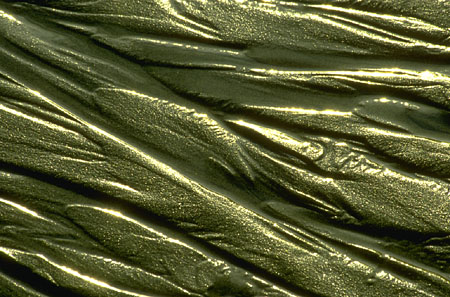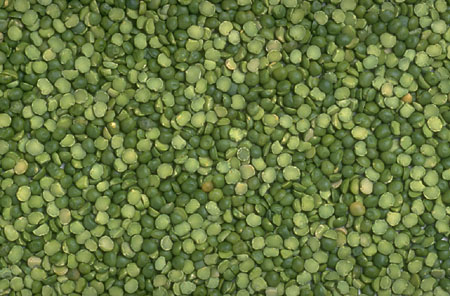LITR 5535: American
Romanticism

Sample Student Midterm 2006
Nguyen Le
The sublime: an essential and interesting aspect
of American Romanticism
Among the many aspects of American romanticism that I have learned so far in this course, such as the gothic, the sublime, nature, the Romantic hero/ine, the romance narrative, desire and loss, etc., I find “the sublime” one of the most interesting aspects that we have examined. So, what is the sublime? Mary Brooks, in her midterm paper of 2005, clearly states: “American Romanticism often defines the sublime as a combination of pleasure and pain mixed on a grand scale. The sublime in literature manifests itself in such emotions as astonishment, fear, and power. These emotions are often invoked when describing nature as magnificent in its scale and beauty yet at the same time somehow forbidding.” For me, the sublime is described and felt as both appealing and appalling at the same time, which can be found in God or holy images, in nature, in humans and in situations. This image can be found in almost all the texts of the pre-Romantic and Romantic periods that we have covered so far, such as the works by Christopher Columbus, Mary Rowlandson, Washington Irving, and it is richly condensed and culminated in The Last of the Mohicans by James Fenimore Cooper, which is a typical novel of Romanticism in every aspect of examination.
Christopher Columbus’s letters report his impressions, knowledge, and experiences from his voyages to the New World. Although they are supposed to present facts, Columbus’s descriptions showed his overwhelmed feelings when facing the natural settings on the new land, which shows his ideas of the sublime in the vision of a wonderland. The description of the island of Espanola in his Letter to Luis de Santangel Regarding the First Voyage is a good example for this. “This island and all the others are very fertile to a limitless degree, and this island is extremely so. …Its lands are high, and there are in it very many sierras and very lofty mountains, beyond comparison with the island of Tenerife. All are most beautiful… In the interior are mines of metals, and the population is without number. Espanola is a marvel.” (26-27) This is also Columbus’s vision of the prosperity of this new land as now part of the mother country.
Mary Brooks gives a brief summary and image of Mary Rowlandson’s Narrative of the Captivity and Restoration as a quintessential American tale that depicts one woman’s sublime struggle with evil and virtue while a captive of Indians. Although Mary Brooks also gives some examples of the sublime, which I find more of the gothic, I agree with her on the idea of the sublime power of God that Rowlandson has her strong belief in “to bring her through the trouble and pain of her captivity. When she manages to survive she attributes it to the sublime nature of ‘…the Lord upheld me with His gracious and merciful spirit…’.” Besides, I understand the sublime in the belief in God as the opposing forces: the lord challenges and inflicts Rowlandson with the sufferings and hardships on the one hand, and gives her the courage, renews her strength on the other. This belief in the sublime omnipotent shows the idea of romanticism in her works.
As for Washington Irving’s Rip Van Winkle, I completely agree with Mary Brooks on the description of the sublime nature with “…a deep mountain glen, wild, lonely, and shagged, the bottom filled with fragments from the impending cliffs, and scarcely lighted by the reflected rays of the setting sun” - A description, as Mary Brooks comments, that clearly relates the vastness and beauty of the place, yet it surely describes a place that you would not wish to venture into. This is so impressive a sight for the eye but so suppressive a setting for the foot! The description brings us both admiration and apprehension at the same time.
With just a
few of the pre-Romantic texts as orientations and predictions of the Romantic
movement, we can find the convergence and concentration of the typical features
of Romanticism in James Fenimore Cooper’s The
Last of the Mohicans, among which
the sublime is our center point of examination. I quite share the idea of Mary
Brooks that the sublime in Cooper’s novel is abundant and can be found in
various layers - in the natural settings, the situational circumstances and
human depictions, though I can find different examples for it.
From the first part of the novel, more than once can we find the overwhelming beauty of nature. The scene of river at night as the sisters and their escort and their new companions move along to their shelter is vividly depicted. “The river was confined between high and cragged rocks…All beneath the fantastic limbs and ragged tree-tops, which were, here and there, dimly painted against the starry zenith, lay alike in shadowed obscurity… as they gazed upon its romantic, though not unappalling beauties.” (49) Also, Duncan’s whisper to the sisters at the beauty of the night scene is so expressive, “Here is nothing to be seen but the gloom and quiet of a lovely evening; how much should we prize such a scene, and all this breathing solitude, at any other moment, Cora! Fancy yourselves in security, and what now, perhaps, increases your terror, may be conducive to enjoyment--” (63) The scene not only is beyond the use of words for description or expression but also presents opposing feelings – both the outreaching wish for enjoyment and the withdrawal resort for security.
In addition to the natural settings, the sublime is experienced in different situational circumstances as well. The simile that Cooper uses when referring to Montcalm’s troops as “numerous as the leaves on the trees” (14) creates the first example of the sublime here. The green leaves on the trees bring a soothing, peaceful notion with its youthfulness and liveliness. However, this refers to an aggressive army ready to fight and to kill! And another instance of the circumstance when the small, desperate group of four – Alice, Cora, Duncan and David – are hiding in the inner cavern waiting for the succour also pushes the tension to the utmost level. “With the last sound of his voice, a deep, a long, and almost breathless silence succeeded. The fresh air of the morning had penetrated the recess, and it influence was gradually felt on the spirits of its inmates.” The silence can be felt as intolerable, while it should be relaxing and inspiring with the incoming flow of fresh air. What a paradoxical situation it seems to be! And that is romanticism.
Finally, besides the gothic in his human characters with concordance in race, skin and personality, Cooper does not forget to depict his characters with much emphasis of the sublime. He describes the appearance of Magua in such a way that Cora “betrayed a an indescribable look of pity, admiration and horror, as her dark eye followed the easy motions of the savage.” (19) Then later, Cooper also has a sublime description of Chigachgook: “In the meanwhile, the gravity of Chigachgook remained immovable…The fierceness of his countenance…It was, however, easy to be seen, by the occasional gleams that shot across his swarthy visage, that it was only necessary to arouse his passions in order to give full effect to the device which he had adopted to intimidate his enemies…” (57) And for Colonel Munro, “When he heard of your [the daughters’] arrival, there was a powerful struggle in his bosom between fear and love.” (61) All these extreme and self-contrastive descriptions show us the multi-faceted characteristic of a person’s characters and relationships, to such an extent that it is almost impossible to ignore either feature in the prevalence of the other or to combine all the contrasting features.
In conclusion, Cooper’s novel The Last of the Mohicans is where seemingly anticipatory features of pre-Romantic texts converge, especially the sublime. Moreover, it is noticeable to me that the sublime in Cooper’s is not only the outside impression on the beholder, such as natural settings or situational circumstances, but also the inside reflection of the self-contradictory human characters, where opposing features seem to come in pairs: curiosity and fear, sense of adventure and sense of security, passion and hatred, desire for authority and burden of responsibility, hunger for and scare of the moment of truth. All these features in novels and in real life make our lives worth examining, experiencing and living.
|
|
|
|


